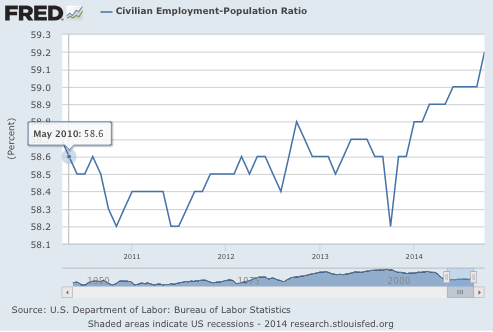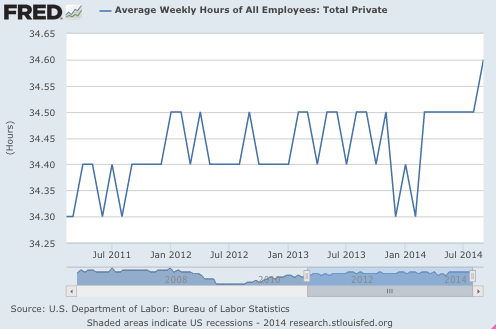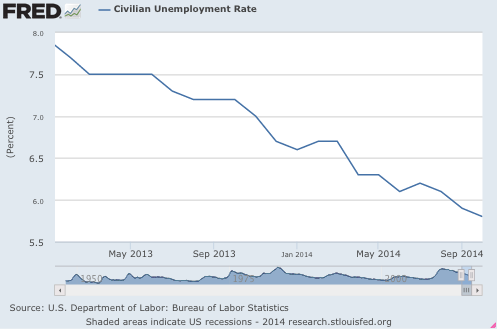Haruhiko Kuroda = Franklin Delano Roosevelt
In April 1933 FDR stunned the markets, the pundits, and his own administration by devaluing the dollar. In June 1933 he stunned everyone again by blowing up the World Monetary Conference, which was trying to restore a fixed exchange rate regime. In October 1933 he stunned everyone again with his “gold-buying” (i.e. dollar depreciation) program, which caused some of his top officials to resign in protest.
In 2003 Ben Bernanke said Japan needed “Rooseveltian resolve.”
A few years later almost all of the major developed economies needed Rooseveltian resolve.
And today the central banker that best illustrates Rooseveltian resolve is the head of the BOJ, Haruhiko Kuroda.
The Bank of Japan Governor not only surprised the markets with his latest splurge of monetary easing. He sprang it on his own board members just two days earlier, jolted into action to stop them making a low-ball forecast that might have sunk his flagship inflation target.
To achieve maximum effect for the shock decision, Haruhiko Kuroda and right-hand man Masayoshi Amamiya kept only a handful of elite central bank bureaucrats in the loop as they laid the ground for the expansion of their quantitative and qualitative easing (QQE) programme.
They didn’t even give the usual forewarning to senior bureaucrats at the Ministry of Finance, according to interviews with nearly a dozen insiders and government sources with knowledge of the bank’s deliberations.
. . .
Timing was critical – and not of his choosing. At the policy meeting the board would also issue a new consumer inflation forecast for the next fiscal year, based on the median estimate from the nine members. But two days before publication, the preliminary estimate was only around 1.5 percent, three of the sources said.
That was well below the 1.9 percent forecast made in July, and if published could have been fatal to his key goal of hitting 2 percent from April next year. Since price expectations play a key role in the consumer behaviours that ultimately determine prices, doubts about the target could be self-fulfilling.
. . .
It worked. They revised their forecasts to take account of the QQE injection, bringing the figure up to 1.7 percent, enough to keep Kuroda’s target within sight and perhaps drain the growing pool of doubters.
That’s about as close to a Svenssonian “target the forecast” approach as I’ve ever seen.
Though Kuroda won the vote, which will boost the BOJ’s government debt purchases by $260 billion a year and triple its buying of risky assets, he also paid a price for the manner and haste of the decision: a board split almost down the middle.
Because policy board members are barred from discussing policy without a quorum in a formal meeting, Kuroda sent BOJ bureaucrats as his emissaries to corral a majority for his easing plan, sources said.
He knew he had the votes of his two deputies, and that there was no hope of winning over the board’s two market economists who have long expressed public doubts about QQE, especially Takahide Kiuchi, who wants the programme terminated in two years.
So fierce lobbying focused on the board’s two former businessmen, Koji Ishida and Yoshihisa Morimoto.
Despite frantic efforts, he failed to win them over. Worse, though they had rarely voiced open doubts about QQE before, their opposition would now become public.
The sources said the swing voter was the hard-to-predict former academic Ryuzo Miyao, who took a long time to convince.
One suggested Kuroda had let a genie of dissent out of the bottle, which could make future easing decisions more difficult to achieve.
Yes, but elected officials have the last word:
Takeshi Minami, chief economist at Norinchukin Research Institute and one of just four of the 19 economists who had correctly forecast the Halloween surprise in a Reuters poll, expects the bank will want to ease again in mid-2015.
If so, Kuroda, whose determination to stay the course is unflagging, could well need Prime Minister Shinzo Abe to stack the BOJ board with reliable reflationists when Miyao’s term ends in March and Morimoto’s in June.
“In order to completely overcome the chronic disease of deflation, you need to take all your medicine,” Kuroda said on Wednesday. “Half-baked medical treatment will only worsen the symptoms.”
A lesson the ECB has yet to learn.




